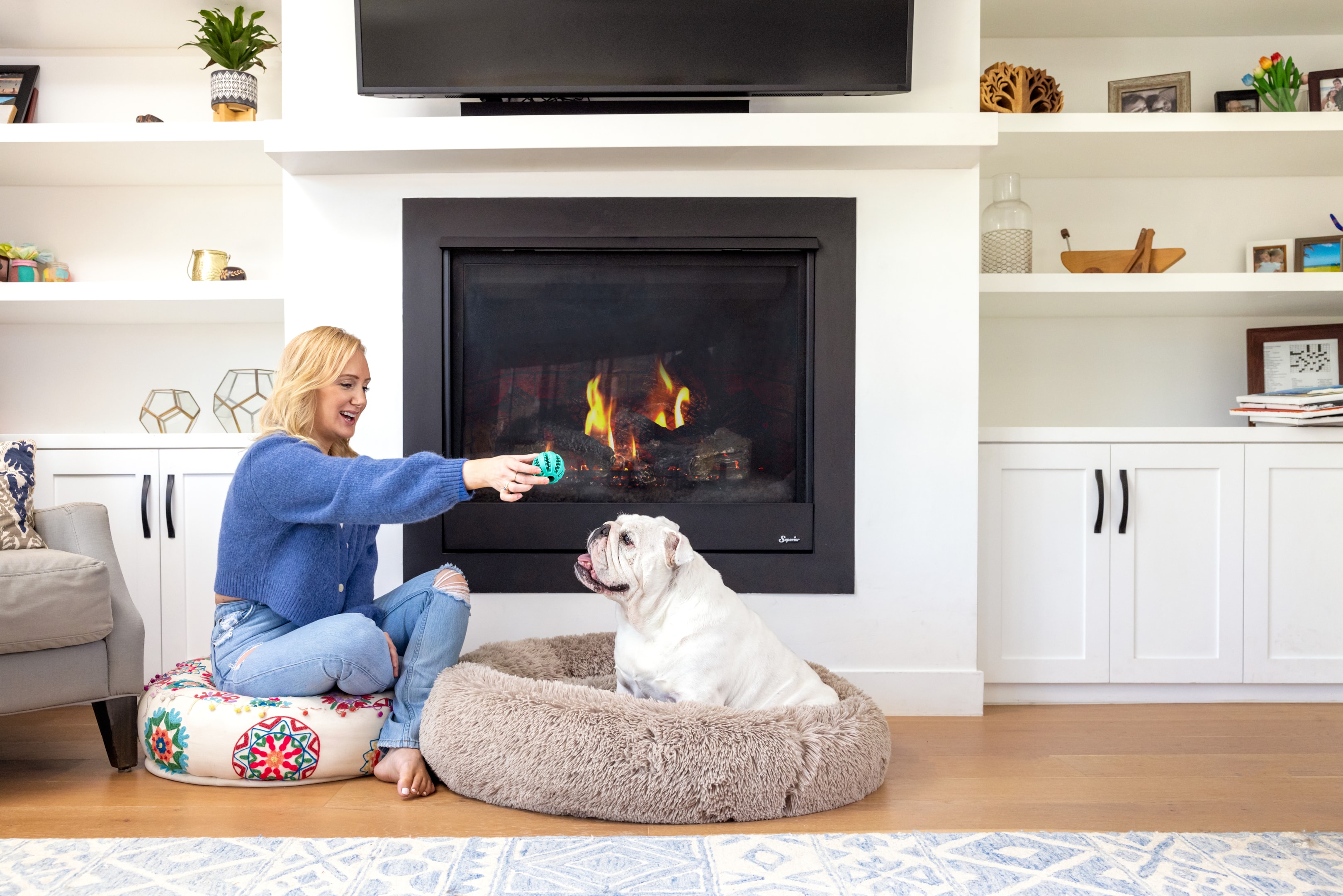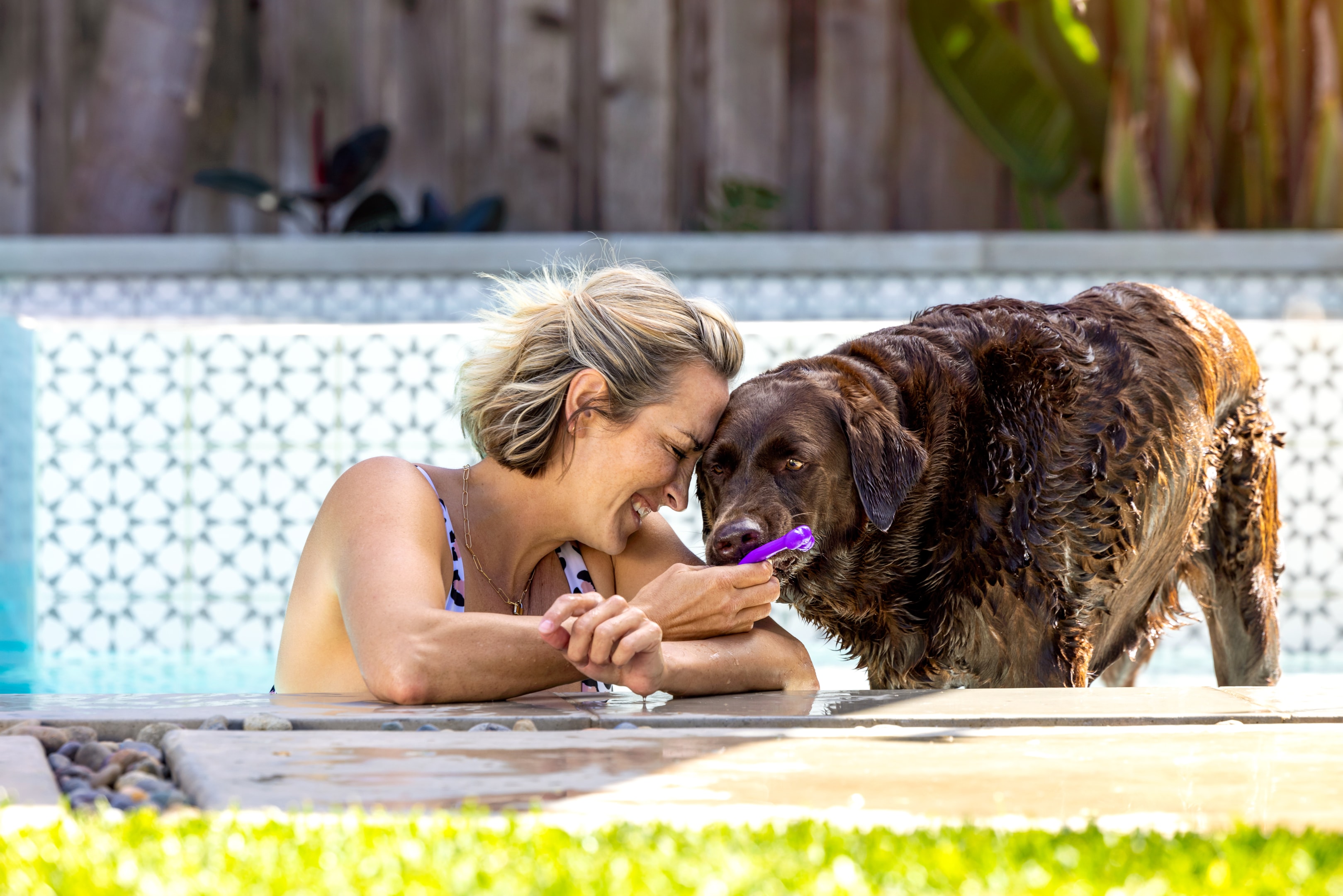How Interactive Dog Toys Can Improve Your Dog's Behavior and Mental Health

How Interactive Dog Toys Can Improve Your Dog's Behavior and Mental Health
Dogs are not just possessions or accessories; they’re loyal companions, trusted guardians, and cherished family members. While a nutritious diet, regular exercise, and frequent vet check-ups are crucial to maintaining a dog’s overall health, one often overlooked yet highly effective aspect of canine care is mental stimulation. Their well-being, both physically and mentally, is essential for a happy, balanced life.

One of the most effective ways to engage your dog's mind, reduce undesirable behaviors, and promote mental health is through interactive dog toys and play!
In this blog, we’ll explore how interactive dog toys can improve your dog’s behavior and mental health, and why incorporating them into your dog's daily routine can lead to happier, more well-adjusted pets.
What Are Interactive Dog Toys?
Interactive dog toys are toys designed to engage your dog both physically and mentally. These toys often involve puzzles, treat dispensers, or games that require your dog to figure out how to activate, retrieve, or manipulate them in order to access a reward (usually a treat). They come in many forms, such as:
Puzzle Toys:
Toys that require problem-solving to unlock a treat, puzzle or toy inside. Slow Feeders are a good example of this type of product. They provide a puzzle and a built in reward. The puzzle is an obstacle to the reward
Treat Dispensing Toys:
These toys release treats as the dog interacts with them, encouraging sustained play. They can come in a variety of shapes, but are traditionally ball or bone shaped. With treat dispensing toys, the toy itself can be engaging to play with even without the reward.
Activity Mats:
These mats often contain hidden pockets or areas where treats are concealed, requiring the dog to search and find them. Sometimes they are called snuffle mats or lick matsas well.
Electronic Interactive Toys or Squeaky Toys:
Toys that move, make sounds, or react to the dog’s behavior, offering a dynamic and interactive experience. These toys are different from traditional dog toys that are simply thrown or chewed on; they require the dog to think and engage in activities that mimic real-life challenges they might face in the wild. This engages their brain and gives them a sense of success and reward when they manage to solve the puzzle and achieve the treat.
Your dog will let you know very quickly what type of toys they like to play with. Once you have narrowed down their interests, buy similar items and use playtime to thoroughly keep your cute pup entertained.
1. Mental Stimulation and Cognitive Health
Dogs, particularly intelligent breeds, need mental challenges to stay sharp and prevent boredom. Interactive dog toys provide exactly this kind of stimulation, giving dogs and cats a fun way to play and to exercise their brains.
Mental stimulation is vital for a dog’s cognitive health. Just like humans, dogs’ brains require exercise to stay healthy. Without this mental exercise, dogs may start to show signs of cognitive decline or suffer from boredom, which can lead to behavioral issues. Interactive toys challenge dogs to think, analyze, and problem-solve, all of which are activities that help to maintain and improve brain function.

For example, puzzle toys hold treats that require your dog to figure out how to move pieces or push buttons to reveal a treat mimic the types of cognitive challenges that dogs might encounter in the wild. These types of toys activate the dog’s natural instincts to forage for food and hunt, engaging their problem-solving skills and preventing mental stagnation.
2. Reducing Boredom and Destructive Behaviors
Boredom is one of the most common causes of behavioral issues in dogs. When a dog becomes bored, they may turn to undesirable behaviors like excessive barking, chewing on furniture, digging, or even self-harm. Dogs are natural learners, and without appropriate outlets for their energy and intelligence, they may resort to destructive behaviors simply to entertain themselves.
Occupation
Interactive dog toys are an excellent way to prevent boredom. They give dogs a focused task to do, keeping them busy and occupied. For example, a treat-dispensing toy may keep your dog busy and engaged for an extended period, allowing you to focus on your tasks without worrying about your dog getting into trouble.
These toys also give dogs the opportunity to express their natural instincts in a constructive manner. Instead of chewing your shoes, your dog could be chewing on tennis ball or an engaging toy that rewards them for their behavior.
Distraction
Additionally, loud, interactive toys can help reduce anxiety, which is another common cause of destructive behavior. A bored dog may become anxious, and anxious dogs often act out.
By providing an engaging toy to play with, you can give your dog a sense of purpose and comfort, helping to alleviate feelings of restlessness or anxiety.
3. Improving Socialization and Behavioral Skills
Socialization is key to a dog’s overall behavior and mental health. Dogs who are not well-socialized may develop fearful or aggressive tendencies, making them more difficult to manage in social situations. Interactive dog toys can be used as tools to encourage positive socialization and reduce fear or aggression.
Interaction
For example, interactive toys that involve interaction with other dogs or people can help dogs learn how to share, take turns, and engage in positive behaviors with others. This can be a great way to train your dog to interact more positively with others at the dog park, or handle play dates with a friend's dog without fear or aggression.
Multiple Dogs
If you have multiple dogs, you can use toys that encourage cooperative play. It's especially good to start this while they are young to lay the foundation of cooperation early. This kind of engagement can foster a sense of teamwork, fun game and mutual respect among your dogs, helping to curb territorial or possessive behaviors.
Training
In some cases, interactive toys are even used in training. For instance, a puzzle toy may be used to teach a dog patience and self-control. When the dog solves the puzzle, they receive a reward, teaching them that patience and persistence lead to positive outcomes.
This can be helpful for dogs and puppies that struggle with impulsivity or aggression, as it helps them associate desirable behaviors with positive rewards.
4. Stress Reduction and Anxiety Relief
Just as humans benefit from stress-relieving activities, dogs can experience mental and emotional strain that affects their overall well-being. Stress can manifest in many ways in dogs, including excessive barking, pacing, destructive chewing, and withdrawal. Interactive dog toys can be a valuable tool for alleviating stress and anxiety in dogs.
For dogs suffering from separation anxiety, interactive toys can provide a welcome distraction when a pup is left alone. A dog that is focused on solving a puzzle or working to retrieve a treat is less likely to feel anxious or agitated.

Additionally, some dog toys are designed with calming properties, such as slow food dispensers that encourage a dog to chew and eat slowly, promoting relaxation.
Interactive toys can also be effective for reducing general anxiety. For example, a treat-dispensing toy that requires the dog to focus and work for their reward can redirect their energy away from anxious thoughts and feelings. These toys provide a form of mental “self-care,” allowing dogs to stay calm and collected even in situations that might otherwise trigger stress.
5. Physical Exercise Through Play
While interactive toys are primarily designed for mental stimulation, they can also encourage physical exercise. Dogs, especially high-energy breeds, require both mental and physical activity to stay healthy. Interactive toys that involve movement, such brain games such as treat-dispensing balls, bouncing toys, or tug-of-war games, can help keep your dog physically active while also engaging their mind.
A toy that encourages your dog to chase, jump, or play fetch not only promotes cardiovascular health but also helps in weight management. Regular physical activity combined with mental stimulation through play can prevent the onset of obesity, improve muscle tone, and increase your animal' overall stamina. Additionally, a dog that is physically tired from interactive play is more likely to relax and sleep well, contributing to their mental and emotional health.
6. Enhancing the Bond Between You and Your Dog
One of the most wonderful things about interactive toys for puppies is how they can enhance the bond between you and your animal. Playing together with your dog using toys not only provides physical and mental benefits but also promotes a sense of trust and companionship. When you engage with your dog using interactive toys, you are giving them positive attention and reinforcing your relationship.
Interactive toys are particularly useful for dogs who may not enjoy traditional forms of exercise or those who are more independent. Through play, you can offer your dog an outlet for energy and anxiety, while also reinforcing obedience and good behavior.

For example, a dog that consistently solves puzzles or plays games with you may develop a stronger sense of connection and trust with dog owners, leading to better responsiveness during training sessions or other activities.
7. Tailoring Toys to Specific Needs
Not all dogs have the same preferences or behavioral challenges, and interactive toys can be tailored to fit a variety of needs. If your dog is easily distracted or has a short attention span, you may choose toys that offer quick rewards or short, engaging activities. For more patient and focused dogs or cats, you might opt for more complex puzzles or multi-step challenges.
Moreover, interactive toys can be used to address specific behavioral issues. For example, if your dog has a tendency to be overly aggressive during play, toys that involve cooperation or turn-taking can teach them patience and appropriate social behavior.
If your dog is shy or fearful, choosing toys that encourage positive interactions with people or other dogs can help them build confidence and trust.
Conclusion
Interactive dog toys are a fantastic tool for improving your dog’s behavior, mental health, and overall well-being. From reducing boredom and destructive behavior to promoting cognitive health and social skills, these toys offer countless benefits for both you and your furry friend.
By incorporating interactive toys into your dog’s routine, you can provide them with the mental stimulation they need, reduce stress and anxiety, and strengthen your bond. Your animal is giving you information all the time. They let you know what works for them and what doesn't. If you have an aggressive chewer seek our ultra-durable products made of all-natural rubber to satisfy their chew strength; if your pup loves playing fetch get some frisbees and play fetch!; Is your dog more interested in playing on their own? Then interactive dog toys are the right choice. You'll quickly figure out what is the best dog toy, that your dog absolutely loves playing with.
The key to a happy, healthy dog is a well-rounded approach that includes physical exercise, socialization, and mental engagement. Interactive toys offer a fun and effective way to achieve this balance, creating a more content and well-adjusted pet.
So, whether you’re trying to curb destructive habits, boost your dog’s cognitive abilities, or just give them a little extra love and attention, interactive toys are a simple yet powerful solution.
By choosing the right toys and making them a regular part of your dog’s daily routine, you can help ensure that your dog enjoys a fulfilling and mentally stimulating life. And who knows? You might even find yourself enjoying the process of playing and bonding with your dog just as much as they do!




